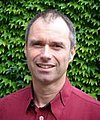Academic Education and Professional Experience
| 2006 | Head of the group Social Sciences in Landscape Research at WSL |
| 1999 - 2006 | Head of the section Landscape & Society at WSL |
| 1991 - 1998 | Research in the reseach group Landscape Development at WSL |
| 2000 | PhD degree at University of Zurich, Switzerland |
| 1991 | University diploma in geography (with sociology and tourism research), University of Berne, Switzerland |
| 1989 - 1991 | Research assistant at University of Bern, Institute of Geography |
Research Interests
My research interests focus on the interactions between people and landscape as well as nature, environment and space. In particular, I care about the following topics:
- Attitudes of people regarding (former), current and future development of landscape, nature, environment, and space, including long-term monitoring of such attitudes.
- Behaviour of people with regard to landscape, nature, environment, and space, and the possibilities to influence such behaviour actively.
- Acceptance of nature conservation measures, such as species-conservation and protected areas, and evaluations of such measures.
Other Professional Activities

